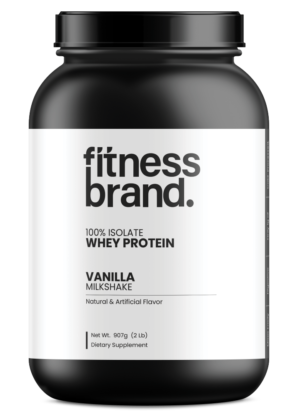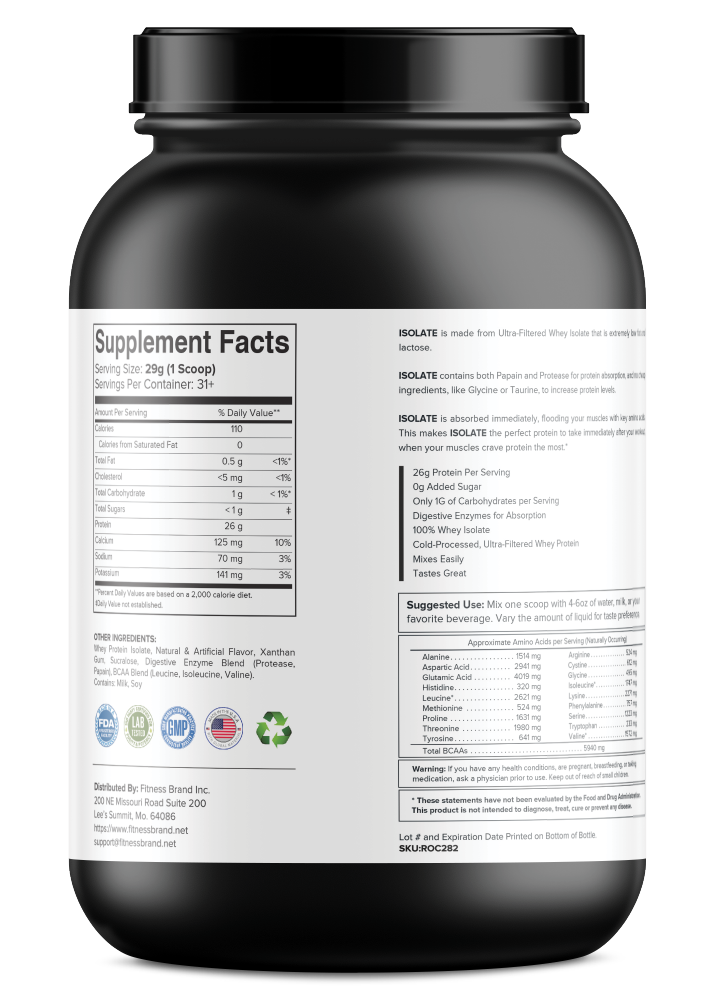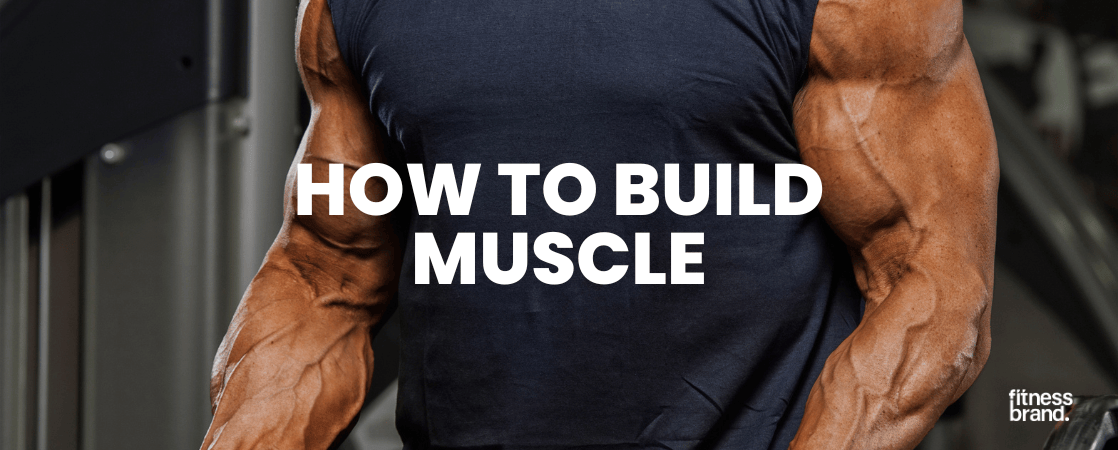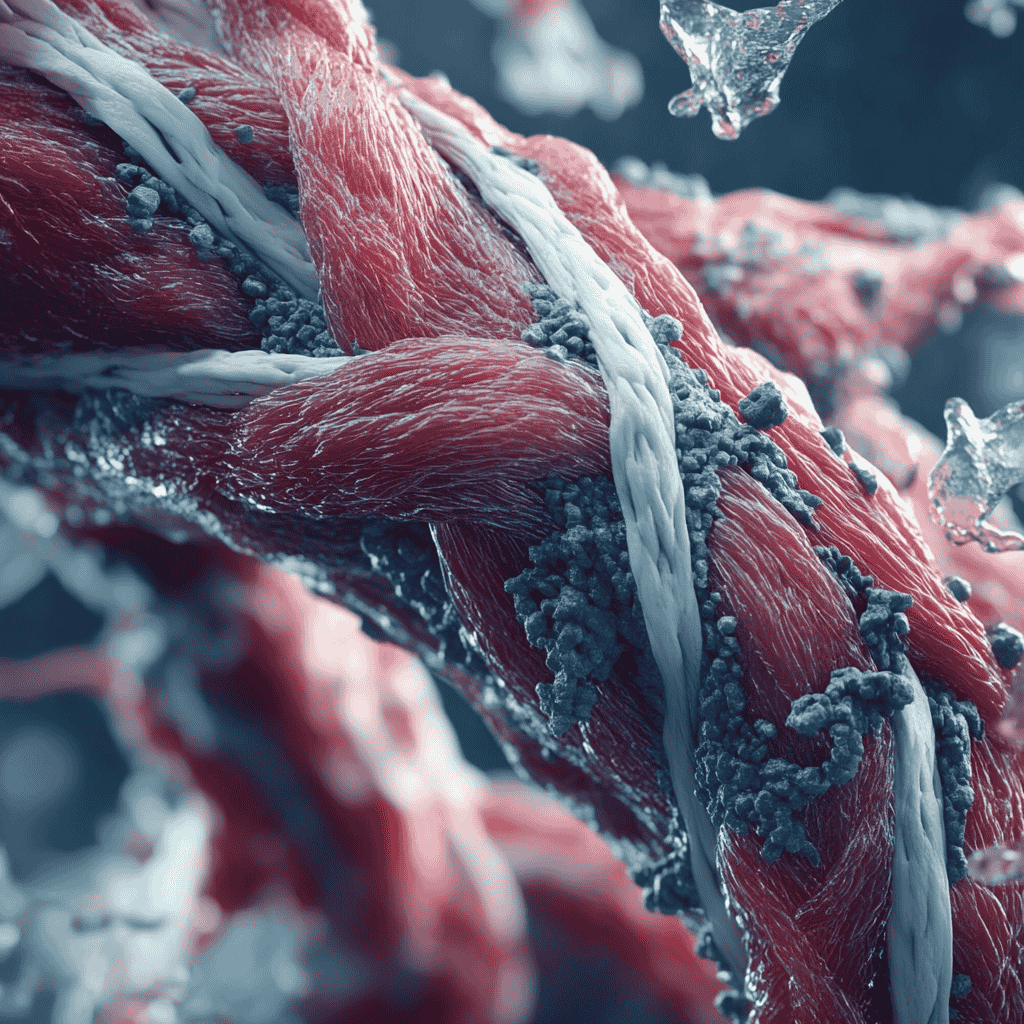


Muscle building isn’t just for bodybuilders or athletes—it’s a cornerstone of health and fitness that benefits everyone. When you focus on muscle growth, you’re improving more than just your physical appearance; you’re enhancing your body’s metabolic efficiency, supporting joint health, and contributing to overall strength and resilience. Let’s break down why building muscle is essential and how it can support a balanced and healthy lifestyle.
Building lean muscle mass elevates your metabolism, meaning your body burns more calories even at rest. This boost in metabolic rate can be especially helpful for weight management, making it easier to maintain a healthy body composition over time. Additionally, stronger muscles provide better support to your joints, reducing strain and minimizing injury risks during everyday activities.

To grow muscle, the body undergoes specific processes collectively known as hypertrophy. In his research, Stuart Phillips describes exercise-induced muscular hypertrophy as the outcome of repeated stress on muscle fibers, leading to their growth and adaptation.1 This process involves a series of physiological responses triggered by resistance training, which prompts muscles to repair and fortify themselves by adding new muscle proteins. Brad Schoenfeld expands on this, explaining that muscle hypertrophy occurs through various mechanisms, including mechanical tension, muscle damage, and metabolic stress—each playing a unique role in the muscle growth journey.2

Understanding how muscle grows involves knowing the interplay between muscle hypertrophy and protein synthesis. Hypertrophy is the process by which muscle fibers increase in size, a vital component of building mass. When you lift weights, you’re creating tiny tears in muscle fibers. The body responds by repairing these fibers through protein synthesis, ultimately leading to stronger, larger muscles. This cycle of breakdown and repair is at the heart of muscle growth.
The mechanisms of muscle hypertrophy include three primary factors:
Protein synthesis must outpace protein breakdown for true muscle growth. This is why a diet rich in protein, coupled with consistent resistance training, is critical to building muscle.3
For muscles to grow consistently, they need a progressively increasing challenge. This concept, known as progressive overload, means gradually increasing the weight, reps, or duration of resistance exercises. Additionally, the concept of time under tension—or the duration a muscle is under strain during each rep—plays a key role in maximizing muscle growth. Both progressive overload and time under tension can be strategically adjusted to continually push your muscles beyond their comfort zone, forcing them to adapt and grow.4
Although the core principles of muscle building apply to everyone, the specifics can differ between men and women. Men tend to have higher levels of testosterone, a hormone that significantly influences muscle growth, meaning they may see faster gains in muscle size. Women, however, often focus on developing lean muscle rather than mass, leading to more defined rather than bulky muscles. Regardless of these differences, both men and women benefit from the increased strength, stability, and metabolic benefits that resistance training provides.
Building muscle requires a systematic approach to training that leverages strength and resistance techniques designed to stimulate hypertrophy. Let’s explore how to maximize muscle gains through targeted exercise strategies.
Strength training, especially resistance-based techniques, is the foundation of any muscle-building program. When you engage in resistance training, your body triggers a series of hormonal responses essential for muscle hypertrophy. Resistance exercise elevates hormones like testosterone, growth hormone, and insulin-like growth factor, which are instrumental in promoting muscle growth. These hormones work synergistically to repair and build muscle tissue after a workout, supporting both recovery and hypertrophy.5
One of the most effective ways to stimulate maximum muscle growth is by incorporating compound exercises—movements that engage multiple muscle groups at once, such as squats, deadlifts, and bench presses. Compound exercises allow you to lift heavier weights and generate greater overall muscle tension compared to isolation exercises. According to Schoenfeld, these exercises not only help build strength but also lead to better muscle activation, making them indispensable for those serious about muscle gains.6
To build muscle effectively, structuring workouts and choosing the right exercises is essential. Research-backed training splits—such as push-pull legs (PPL), upper/lower body splits, and full-body routines—ensure that muscles are adequately challenged while allowing recovery. Incorporating compound exercises like squats, deadlifts, rows, and bench presses is essential, as these exercises stimulate a wide array of muscles, leading to significant muscle and strength gains.
For beginners, starting with proper weightlifting techniques is critical. Learning safe and effective lifting form will help prevent injury while setting a solid foundation for hypertrophy. A well-structured hypertrophy training program will include exercises targeting each major muscle group, typically with rep ranges between 8–12 per set to promote muscle growth.
Below is a sample hypertrophy training program designed to build lean muscle mass:
Using high-rep, moderate-weight exercises can drive adaptations in both strength and muscle growth. By balancing compound lifts with isolation exercises, you’ll achieve optimal strength and hypertrophy results.6
Nutrition is just as crucial as training when it comes to building muscle. Eating the right foods, hitting specific macronutrient targets, and maintaining a caloric surplus are essential to fueling your muscle-building goals.
Muscle growth requires a diet rich in protein, carbohydrates, and fats, with protein playing the starring role. Protein is essential for muscle repair and growth as it supplies the building blocks—amino acids—needed for muscle synthesis. A high-protein diet, coupled with resistance training, supports gains in muscle mass and strength. Aim for about 1.6–2.2 grams of protein per kilogram of body weight per day, adjusting as needed based on your individual goals and training intensity.7
To ensure you’re gaining muscle rather than just weight, a caloric surplus calculator can help you determine the precise number of calories you need. This calculator considers factors such as age, weight, and activity level to help you achieve a manageable and effective surplus for muscle gain.
A balanced diet of whole foods is vital for sustainable muscle growth. Here are some nutrient-dense options that should be staples in a muscle-building diet.8
Post-workout nutrition is also key for muscle recovery, as the period immediately following exercise is prime time for nutrient absorption. Foods high in protein and carbohydrates, like a protein shake with banana or chicken with rice, can kickstart recovery. Supplementing with protein powders, creatine, and branched-chain amino acids (BCAAs) is often beneficial for maximizing recovery and performance.9
If you’re serious about optimizing muscle recovery, reducing soreness, and maintaining peak performance, Fitness Brand’s Fruit Punch BCAA is your go-to supplement. Packed with essential branched-chain amino acids, it’s designed to fuel your body when it needs it most—especially post-workout.
✔ Enhances Muscle Recovery – Speeds up repair and reduces soreness so you can get back to training faster.
✔ Supports Lean Muscle Growth – Helps preserve lean muscle mass while fueling muscle protein synthesis.
✔ Reduces Workout Fatigue – Improves endurance by delaying muscle exhaustion during intense training.
✔ Delicious Fruit Punch Flavor – A refreshing, naturally flavored option that makes supplementation enjoyable.
✅ Manufactured in FDA-Registered & GMP-Certified Facilities – Ensuring the highest standards of purity and potency.
✅ Third-Party Lab Tested – Verified for quality, so you get exactly what’s on the label.
✅ 100% Natural Formula – No added sugars, gluten-free, and corn-free for clean nutrition.
Upgrade your recovery game today! Try Fitness Brand’s Fruit Punch BCAA and experience the difference in your performance and muscle recovery. 🚀 💪
For those pursuing muscle gains and body composition goals, bulking and cutting phases are fundamental. In a bulking phase, the goal is to eat at a caloric surplus to build muscle. A structured bulking meal plan includes high-protein, calorie-dense foods to support lean mass gains. When transitioning to a cutting phase, calories are reduced to eliminate body fat while preserving muscle, revealing the gains made during the bulk.
Mass gainer supplements can be helpful during bulking for individuals who find it challenging to consume enough calories. Protein supplementation is also highly effective for muscle retention and building. This cyclical approach helps maintain a muscular and defined physique over time, especially for bodybuilders and athletes.7
Whether you’re in a bulking phase building serious muscle or cutting to reveal your hard-earned definition, Fitness Brand’s 100% Whey Protein Isolate – Chocolate is the perfect addition to your nutrition plan. Designed for athletes, bodybuilders, and fitness enthusiasts, this high-quality protein powder delivers the nutrients your muscles need for optimal growth and recovery.
✔ Supports Lean Muscle Growth – Helps maximize muscle retention and repair after intense workouts.
✔ Enhances Recovery – Fast-absorbing formula aids in post-workout muscle repair and reduces soreness.
✔ Boosts Metabolism & Satiety – Keeps you feeling full longer while supporting a healthy metabolism.
✔ Delicious Chocolate Flavor – A rich, satisfying taste that blends smoothly with water, milk, or your favorite shake.
✅ 100% Whey Protein Isolate – Pure, fast-digesting protein with no unnecessary fillers.
✅ Manufactured in FDA-Registered & GMP-Certified Facilities – Ensuring the highest standards of safety and effectiveness.
✅ Third-Party Lab Tested – Verified for purity, potency, and quality.
✅ Gluten-Free & Non-GMO – A clean, high-quality protein source you can trust.
Power up your performance and recovery with every scoop! Whether you’re bulking, cutting, or simply looking to increase your daily protein intake, Fitness Brand’s Whey Protein Isolate is your ultimate fuel for success.
When it comes to maximizing muscle growth, choosing the right exercises for each muscle group is crucial. By targeting specific areas with proven movements, you can effectively build balanced, powerful muscles throughout your body.
If your goal is to get bigger arms and a well-developed chest, focusing on key exercises that isolate and activate these muscles is essential.
Building leg muscle mass requires exercises that activate major muscle groups in the lower body, including the quadriceps, hamstrings, and glutes.
For a strong, muscular back and well-defined core, exercises that emphasize pulling and core stabilization are key.
Recovery is as important as training for effective muscle growth. Proper rest, active recovery, and strategies to prevent plateaus will keep your gains consistent and sustainable.
Adequate rest between workouts allows your muscles to repair and grow. Muscles typically require 48 hours to recover after intense resistance training. Incorporating rest days between heavy lifting sessions ensures that muscles can rebuild without risk of overtraining.
Recovery techniques such as active recovery and proper nutrition can aid in faster muscle repair and reduced soreness.
Experiencing a plateau can be frustrating, but it’s a common hurdle in the muscle-building journey. Plateaus happen when the body adapts to a consistent training regimen, slowing progress.
For those looking to take muscle-building to the next level, advanced techniques can maximize gains and help overcome plateaus. From strategic workout structuring to optimizing every movement, let’s explore the methods that can refine and elevate your muscle-building journey.
One of the fundamental principles of advanced muscle growth is progressive overload, which means continually increasing the demands placed on your muscles to stimulate further gains. This can be achieved by adding weight, increasing reps, or adjusting the tempo of exercises. Without progressive overload, muscles will adapt and growth will stall. Implementing slow, controlled movements during each rep—also known as time under tension—is another way to enhance hypertrophy. By slowing down the eccentric (lowering) phase, for example, you increase the amount of time your muscles are engaged, leading to greater muscle fiber recruitment and fatigue.4
Compound Exercises vs. Isolation Exercises: Compound exercises, like squats, deadlifts, and bench presses, should be prioritized when aiming for maximum muscle gain. These exercises involve multiple joints and muscle groups, allowing you to lift heavier weights and stimulate more growth. However, isolation exercises, like bicep curls or leg extensions, play an essential role in hypertrophy-focused training. Isolation exercises allow you to concentrate on specific muscles, making them ideal for addressing weak points or achieving a more defined look.
Choosing the right training split is crucial for efficient muscle growth. While there are various splits, including full-body, upper/lower, and push-pull-legs (PPL), each has unique benefits that cater to different fitness levels and schedules.
The best training split is ultimately one that aligns with individual goals and schedules. Customizing your routine based on factors such as experience level, recovery needs, and muscle imbalances can help you build a program that’s both effective and sustainable.4
Knowing when to prioritize compound exercises over isolation exercises is key for muscle-building success. Compound exercises should typically form the foundation of any muscle-building program, as they activate multiple muscles and joints, allowing you to lift heavier weights and achieve a stronger anabolic response. Exercises like deadlifts, bench presses, and squats stimulate large muscle groups and help create a balanced, powerful physique.
However, isolation exercises hold value, especially in a hypertrophy-focused program. Isolation exercises allow you to target specific muscles for increased definition and balanced development. These exercises can be particularly beneficial for addressing muscle imbalances or focusing on smaller muscle groups like the biceps, calves, and triceps. A well-rounded program often includes a combination of both compound and isolation exercises to maximize gains and sculpt a balanced physique.
Proper supplementation and progress tracking can significantly enhance your muscle-building efforts. The right supplements support recovery and muscle repair, while tracking tools help you monitor progress and adjust your approach as needed.
Supplements can play an essential role in muscle growth by ensuring your body has the nutrients it needs to repair and build muscle fibers effectively. Here are some of the top supplements for muscle gain:
When choosing a protein powder or other supplements, look for reputable brands and consult with a nutrition expert if possible. Selecting supplements that align with your training style and dietary preferences can further enhance their effectiveness.
Monitoring your workouts and tracking progress are invaluable for long-term success. By logging your sets, reps, weights, and even notes on performance, you can identify areas for improvement and ensure consistent progression.
Some recommended apps for tracking muscle gain and gym workouts include:
Tracking tools keep you accountable and give you insights into your progress, helping you make data-driven decisions about when to increase weights, adjust rep schemes, or try new exercises. By staying consistent with tracking, you can ensure that each session contributes to your muscle-building goals.
When it comes to muscle building, beginners and seasoned lifters alike often have questions about the most effective and safest ways to achieve and maintain muscle growth. Here’s a look at some frequently asked questions to help guide your journey.
The rate of muscle gain depends on factors like genetics, training intensity, nutrition, and consistency. Generally, beginners can expect faster gains compared to experienced lifters. On average, most individuals can gain about 1–2 pounds of muscle per month when training and eating optimally. However, muscle growth rates will vary widely based on each person’s unique physiology and adherence to training.
Building muscle naturally is entirely possible and highly rewarding. Following evidence-based practices for nutrition, progressive overload, and recovery allows for sustainable, steroid-free muscle growth. By consuming enough protein, getting adequate rest, and focusing on a well-rounded resistance training program, natural bodybuilders can achieve impressive results without compromising their health.12
Lifting weights safely is crucial to prevent injuries that could derail your progress. Here are some best practices:
During a cutting phase, where the goal is to lose body fat, maintaining muscle can be challenging. To preserve muscle mass, focus on a high-protein diet, keep lifting weights, and avoid drastic calorie cuts. Aim for a moderate calorie deficit and include compound exercises in your workouts to ensure muscles are continuously stimulated.
While often viewed as a difficult feat, it’s possible to gain muscle and lose fat with a balanced approach. Known as body re-composition, this approach requires careful attention to diet and training. Prioritizing a high-protein diet, engaging in resistance training, and maintaining a slight caloric deficit. This combination helps the body draw energy from fat stores while using dietary protein and training to build muscle.12
Muscle building is about more than just aesthetics; it’s a transformative process that improves fitness, strength, and overall health. From enhanced metabolism to better joint support, the benefits of building lean muscle extend far beyond the gym. By understanding and applying key principles like progressive overload, balanced nutrition, and proper recovery, anyone can achieve sustainable muscle growth.
Remember that muscle growth is a journey. Consistency and dedication to a balanced approach—encompassing exercise, nutrition, and rest—will bring lasting results and improved muscle definition. Use the tips and techniques outlined in this guide to fuel your progress, and stay focused on your goals.
Now it’s time to put these strategies into action and start building the muscle, strength, and fitness you’ve been aiming for!
